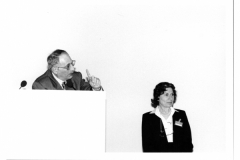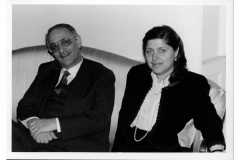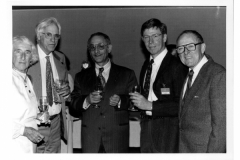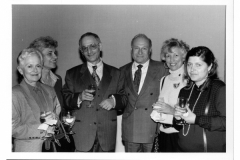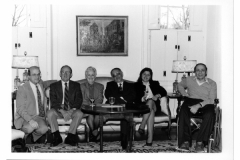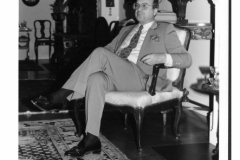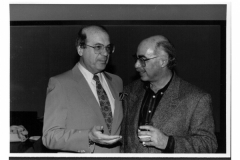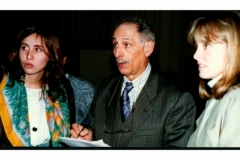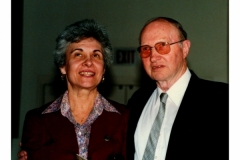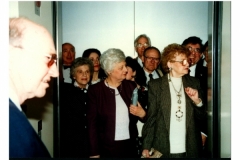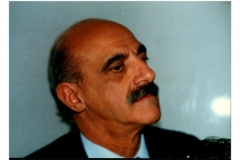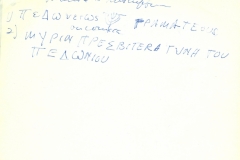Baldassare Conticello on “Rediscovering Pompeii (April 22, 1990)
"Baldo is a most colorful character, a Sicilian Groucho Marks with a stogie always drooping from his mouth or in his hand. But he's also one of the foremost archaeologists - often lecturing at the Smithsonian, Getty, and National Geographic, all of whom aid him in his innovative methods of preserving Pompeii and Herculaneum." - Estelle Shohet Brettman
"Professor Baldassare Conticello, Superintendent of Archaeology at Pompeii and Vice-President of the International Catacomb Society, will speak on his innovative pilot project for restoring Pompeii in an illustrated lecture entitled "Restoring Pompeii: A New Interdisciplinary Approach in the Wold of Archaeology" in the Remis Auditorium, Museum of Fine Arts, Boston. He will explain the pioneering use of computers for archaeological research at Pompeii, a method which can be applied to other archaeological sites as well as utilized for compiling a bank of easily accessible information. Eminent archaeologist and author of many publications, Prof. Conticello has conducted excavations and restorations at major sites in Italy and the Mediterranean. One of his most recent explorations involved the resumption of excavations (testing carefully for noxious gasses), after a 222-year lapse, in the famed Villa dei Papiri at Herculaneum. This "seaside palace" of a Roman nobleman housed an almost 2,000-year old treasure trove of art objects as well as a famed library, the repository for papyrus scrolls uniquely preserved in the mud and lava from the eruption of Vesuvius. Among many other activities, this notable international lecturer has served as Superintendent of Archaeology for the Apulia Region, Acting Superintendent of Archaeology of Rome and Latium, and Director of the National Archaeological Museum in Rome." (Estelle Brettman).
"Speaking at the Museum of Fine Arts on 22 April 1990, Prof. Baldassare Conticello described recent finds and innovative programs he has initiated at Pompeii. These programs offer great potential for significant and diverse environmental applications, as well as creative approaches to conservation and restoration techniques. He also discussed the exhibition, "Restoring Pompeii," originally under his supervision, which has just completed a successful showing at the I.B.M. Gallery of Science and Art in New York. Of particular interest is the demonstration of the pioneering role in which the computer has assumed in archaeology and the exhibition of newly discovered, hitherto unseen Pompeian artifacts." (ICS Newsletter, 1990)
